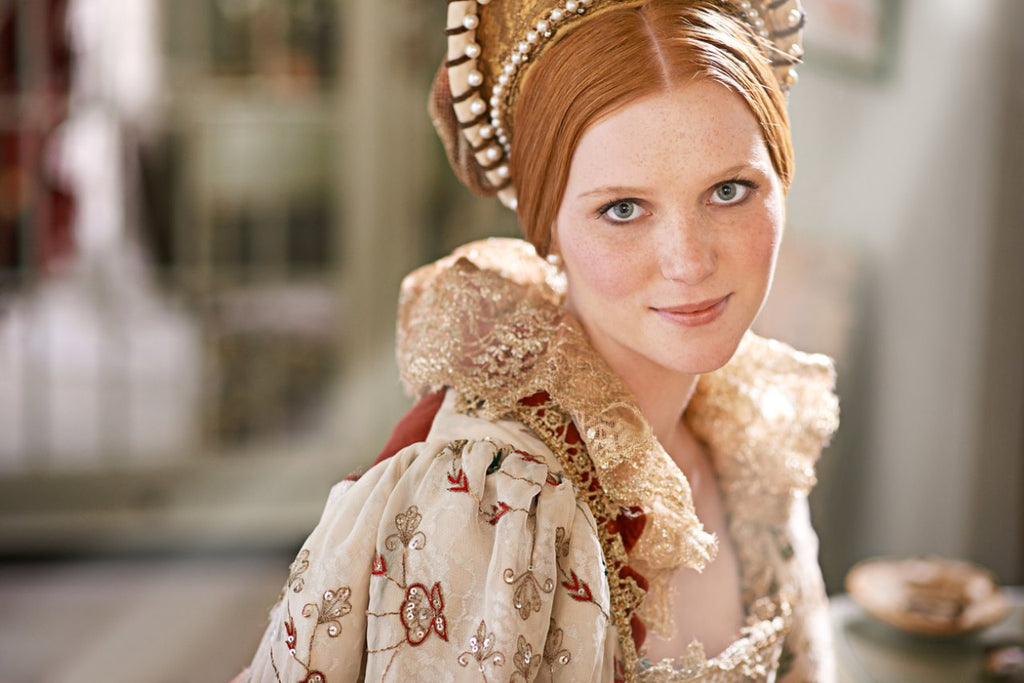Your Cart is Empty

Whether you're preparing for a Renaissance faire, looking to infuse historical elegance into your style, or simply curious about the beauty practices of the era, understanding Renaissance makeup can enrich your appreciation of history and beauty alike. In this exploration, we're going to guide you through creating a Renaissance-inspired makeup look, offer modern adaptations, and address common queries about Renaissance beauty standards. Let’s dive in!
If you’re captivated by the sheer elegance and timeless beauty of the Renaissance era, diving into the world of Renaissance makeup will be an adventure. This period was all about natural beauty amplified with subtle enhancements, creating a look that’s both ethereal and grounded in history. Whether you’re dressing up for a ren faire or just looking to infuse some classical beauty into your style, understanding the foundation of Renaissance makeup is key.
The Renaissance era focused on a soft, luminous complexion that exuded youth and health. To achieve this, women of the time went for a pale base, which symbolized a life of leisure away from the sun’s labor-inducing rays. But it wasn’t just about looking pale; it was about looking naturally radiant. A slight rosy tint on the cheeks and lips added a hint of color to the otherwise minimalistic approach.
Renaissance makeup hues were limited yet impactful; the pigments used were derived from natural sources, with colors like ochre for the face and crushed berries for the lips and cheeks. These organic materials were the foundation of creating a look that was both authentic and respectful of the era’s aesthetic, so if you’re eager to replicate this, focus on earthy tones and natural reds for a truly authentic Renaissance makeup look.
It’s worth noting that Renaissance makeup often relied on the use of natural ingredients, such as lead for a pale complexion, which we now know is harmful. Today, we can achieve the same looks with modern, safe cosmetics. For instance, a high-quality mineral foundation can replicate the pale, luminous base without the health risks. Always opt for products that are free from harmful chemicals, sticking to brands that prioritize safety and quality.
The application of makeup during the Renaissance was an art form, using simple yet effective tools. For example, egg whites were used as a natural primer to achieve that coveted smooth, porcelain-like skin, while lead (as we mentioned above) was often used as an early version of foundation.
For those looking to recreate Renaissance makeup looks today, modern equivalents like lightweight, hydrating primers, powders and foundations can offer a similar effect, especially if you opt for much lighter shades than your usual color match. The key is in the blending - you’ll want to ensure that each element complements your natural beauty rather than overpowering it.

Heading to a ren faire? Amp up your authenticity with makeup that mirrors the era. Start with a luminous base, add a touch of rosy color to your cheeks and lips, and keep your eyes simple with just a hint of enhancement. But remember, the Renaissance was all about natural beauty, so it’s a good idea to keep things light and ethereal. Avoid cakey foundation and ultra-glam add-ons like false lashes and glitter, as these aren’t the most historically accurate.
Choosing the right foundation shade to achieve a Renaissance look involves finding a balance between your natural skin tone and the era’s preference for a luminous, pale complexion. Opt for a foundation that is one shade lighter than your natural skin tone to mimic the look, but make sure that it still blends seamlessly with your neck and décolletage to avoid an unnatural contrast.
While staying true to the era is important for authenticity, there’s always room for modern adaptations. You can always feel free to mix in contemporary beauty trends like a subtle highlighter to accentuate your features, or a tinted lip balm for a more hydrated look. The goal is to blend the past with the present in a way that respects historical accuracy while embracing modern beauty standards.
For more inspiration on how to complement your Renaissance makeup with appropriate hairstyles, check out these elegant Renaissance era hairstyle ideas for a timeless look.
For historical accuracy, focus on the era's emphasis on a pale base, natural pigmentation for lips and cheeks, and minimal eye makeup, but research and references from historical texts and paintings can guide your makeup choices.
Additionally, consider the context - makeup varied depending on social status and region. For a more in-depth exploration, you might want to seek out resources dedicated to historical beauty practices or consult with historians specializing in the period.
Ultimately, embracing Renaissance makeup isn’t just about dressing up for an event; it’s about connecting with history in a personal and creative way. So whether you’re attending a Renaissance faire, participating in a themed photoshoot, or simply love the aesthetic, Renaissance makeup offers a timeless appeal that transcends trends.
So, ready to embark on your Renaissance beauty journey? It all starts with the right outfit to inspire your makeup look! Dive into our collection of Renaissance clothing and accessories to find your perfect high quality Renaissance costume for women - all of our dresses are hand-made to your custom order, so there’s truly something for everyone! And with the right ensemble and makeup, you’ll not only look the part but feel deeply connected to the elegance and beauty of the Renaissance era.